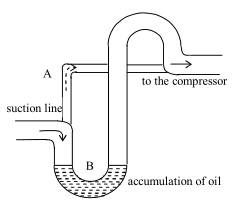The power supply to the incinerator must be turned on immediate after black out. The cooling program...
program of the incinerator will then automatically be activated. In case of a black out of more than 5 to 7
minutes the possibility of damaging the incinerator is very high. In case the emergency switch board is
hooked up to the main supply of the Incinerator, the plant will start at cooling program until it the
temperature reach 100°C and/or until manual reset at the electric panel. Factory settings: The nozzles are
adjusted to max sludge burning capacity, without burning solid waste. This setting can be found by closing
the nozzles and turn them counter clockwise 1/4 round. Adjustment on board: Depending on the layout of
the funnel and depending on the amount and type of solid waste burned, the nozzles might require
readjustment. If no measuring tools are available, please observe if there is coming dark smoke out of the
stack. If so, then open the air nozzles in the primary combustion chamber until it stops.
If the exhaust gas temperature is too high, or if sparks are developed, this can be overcame by opening
the air nozzles in the secondary chamber (left turn more air, right turn less air).
参考解析:
1. After black out, __ according to the passage.
A. we check the reason in the first place
B. We should turn on the power supply in the first instance
C. we should employs water for cooling incinerator
D. we should first start at cooling program
2. How do we readjust the nozzles if no measuring tools are available on board?
A. If observing there is coming sparks out of the stack, open the air nozzles in the primary combustion chamber.
B. If observing there is coming dark smoke out of the shack, open the air nozzles in the primary combustion chamber.
C. If observing there is coming dark smoke out of the stack, open the air nozzles in the secondary combustion chamber.
D. If observing there is coming sparks out of the stack, open the air nozzles in the secondary combustion chamber.
3. For purpose of adjusting to max sludge burning capacity, we should turn the setting controlling nozzles__ in a factory.
A. anticlockwise a half round
B. clockwise a quarter circle
C. clockwise a half round
D. anticlockwise a quarter circle
4. Factors affecting the readjustment of nozzles are ____.
A. the layout of the funnel
B. the amount and type of solid waste
C. maximum sludge burning capacity and the layout of the funnel
D. A and B


 百度扫一扫练题
百度扫一扫练题
 关注千题库公众号
关注千题库公众号








